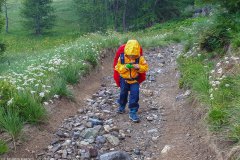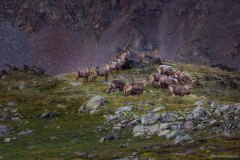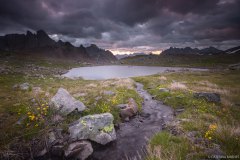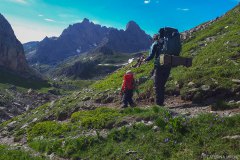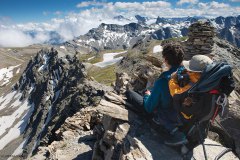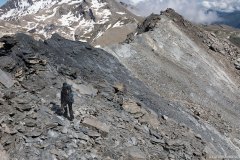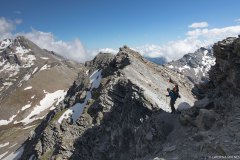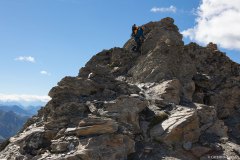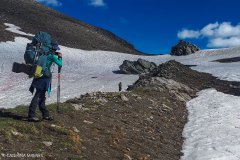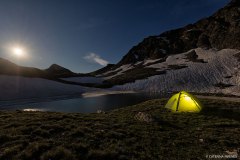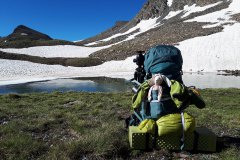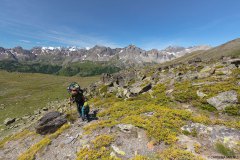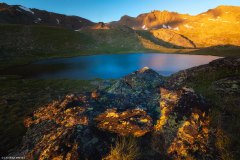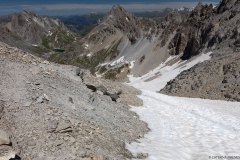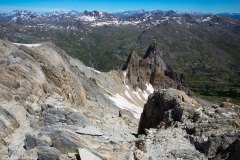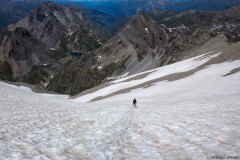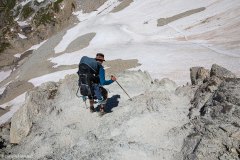At the end of June 2020, the three of us set out for a two-week vacation with a tent in the French Alps. Before that, we did a hike to a lake in Kleinwalsertal to see how much our son could walk in the first place. And walk he did! Twelve kilometers there and back (or “there and back again,” to quote Bilbo Baggins), climbing to 1,600 meters of altitude—up and down—on his own feet.
Of course, we were very slow, and occasionally he said he didn’t want to walk anymore. We were prepared to turn back, since pushing him too hard would backfire, and that wasn’t what we wanted. But first, I asked if he’d like me to tell him a story. He said yes, so for half of the ascent I told him the story of Captain Scott at the South Pole, followed by the tale of Shackleton and the Endurance in Antarctica. He stopped complaining and was so fascinated by these two stories that I ended up retelling them several times during our vacation in France two weeks later.
This time, we didn’t need to plan as much as we did the previous year, when we were in the French Alps for the first time. By now, we knew the region well, and there were still plenty of possibilities for another two full weeks. We were also more experienced in planning precise food rations. Our daily menu looked roughly like this:
Breakfast: (110g muesli—the highest caloric density we found with no added sugar—plus 40g mixed nuts or, alternatively, 40g dried berries and 25g powdered milk) × 2 adults. For our son, we gave half of one adult portion. Over time, we learned that some types of muesli work better with nuts, while others (like oat porridge) pair better with berries.
During the day: Option 1: a Knorr soup with mixed salty nuts or crackers. Option 2: sausages with protein bread. We added trail mix, power bars, or dried fruits—about 250g total for all three of us. We’re not big fans of fatty sausages, but they keep better than cheese in both warm and cold temperatures and contain more protein. When planning longer trekking tours, we prioritize in this order: high caloric content, fat, and protein. Carbohydrates come last, simply because they don’t last long—you’re hungry again after 2–3 hours.
Dinner: We ate either trekking food or couscous. There’s not much to say about trekking food—you just buy it and add water. For couscous, we used 100g per person, mixed with 100g parmesan, 20g olive oil, and a generous blend of herbs.
That was our menu last year in France, then again two months later in Canada, and once more this year in France. It looks simple, but last year I spent about two months researching: how many calories each of us would need (men supposedly need more than women, though that didn’t seem to be the case for us), which foods have the highest caloric density and lowest weight, and how to make the daily menu both tasty and varied. On such tours, weight is a major concern—you don’t want to starve, but you also don’t want to carry a single unnecessary gram. That’s why planning the food rations took me so long the first time.
Naturally, our son walked even better this year than last: longer distances, steeper paths, crossing snow and scree fields that weren’t part of the plan last year. He even carried his own rucksack from time to time, which held a bottle of water, his plush rabbit, and his Crocs. Speaking of the rabbit: we couldn’t bring any toys, and our son didn’t seem to miss them, but life without the plush rabbit is simply not an option. That’s something we absolutely cannot forget. Besides the rabbit, we brought a small book about a mole who wanted to find out who had pooed on its head. S. laughed a lot during the first two days, but after that, we were all too tired in the evenings—even for that short story.
This year, we also took him up two 3,000-meter peaks. Each time, he had to be carried, as the terrain was too much for his small feet. But apart from those two episodes, he walked on his own and became so used to being praised for his bravery that one day, when other hikers greeted us with just a short “Bonjour,” he asked, “Why didn’t they say ‘Bravo’?” That’s what he had come to expect from people who saw such a small child on mountain paths.

